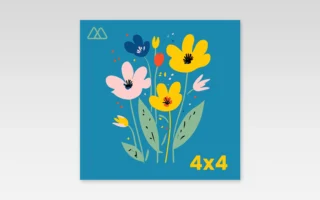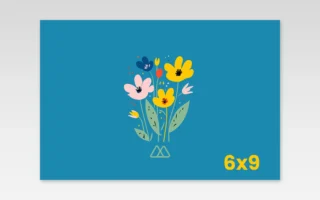Restaurant Postcard Marketing Ideas to Drive More Customers
Why Restaurant Postcard Marketing Works
Physical postcards deliver exceptional results for Denver restaurants, with 71% of local diners redeeming postcard coupons compared to just 43% for email promotions. The right postcard size for your restaurant type and offer can improve redemption rates by up to 28% without changing your promotion.
Business Card Denver’s analysis of hundreds of local restaurant campaigns shows that strategic size selection based on your restaurant concept significantly impacts customer response.
Size-Specific Restaurant Postcard Strategies
6×9″ Menu Showcase Postcards
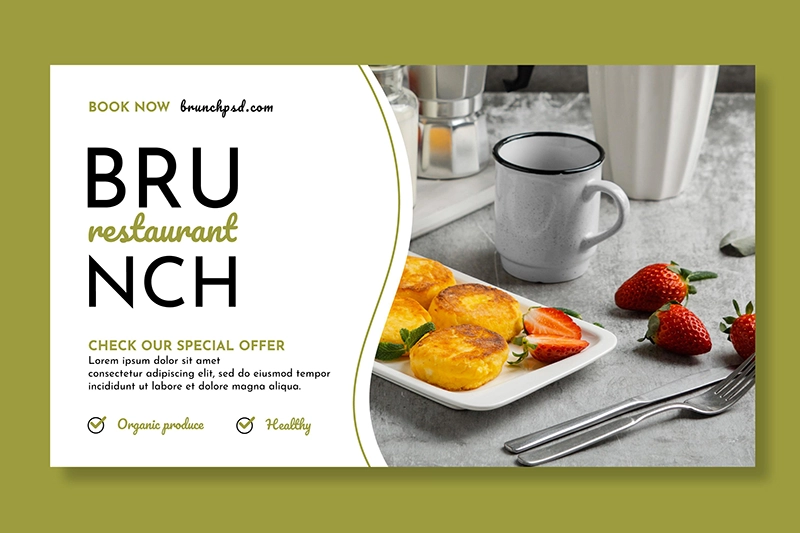
The larger 6×9 format provides ample space for featuring multiple menu items and works particularly well for restaurants with visually appealing dishes.
Fine Dining Applications: Guard and Grace steakhouse used 6×9″ postcards to highlight their 3-course menu with professional food photography. The larger format allowed for detailed descriptions alongside high-quality images of signature dishes.
Design Tip: Denver’s altitude affects food photography. Professional printers use altitude-adjusted color profiles that compensate for different light qualities at 5,280 feet, ensuring meat dishes appear with accurate coloration rather than the slightly bluish tint that standard profiles can produce.
Technical Specs: For 6×9″ menu postcards, maintain a 0.25″ bleed area and keep text at least 0.375″ from edges. Use 16pt card stock for upscale restaurants to convey quality through weight and texture.
4×6″ Single-Item Promotion Cards
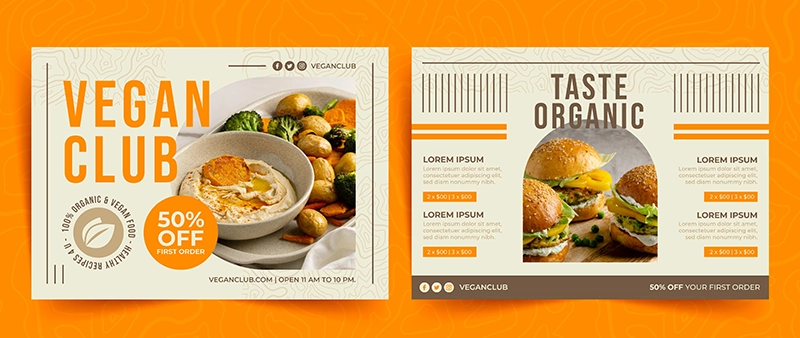
The standard 4×6″ postcard size works exceptionally well for focused, single-item promotions that drive immediate action.
Success Story: Cherry Cricket’s $5 burger coupon campaign used simple, food-focused 4×6″ cards featuring a single mouth-watering burger image with a clear offer and expiration date. This campaign generated 879 redemptions from a 5,000-piece mailing—a 17.6% response rate.
QR Code Integration: Small postcards benefit from QR codes linking to expanded information. Denver restaurants have found success linking to specialized menus (gluten-free, vegan options) that would overwhelm the limited postcard space. Data shows QR codes on 4×6″ restaurant postcards have 22% higher scan rates than on larger formats.
Cost Benefit: The 4×6″ format offers significantly lower production and mailing costs, making it ideal for high-volume, frequent mailings that keep your restaurant top-of-mind throughout the year.
Choosing the right postcard size allows for creative design strategies that stand out in mailboxes. Explore creative postcard design ideas that capture attention.
Restaurant Loyalty Program Postcards
4×4″ Square Loyalty Cards
The square 4×4″ format creates distinctive loyalty cards that stand out in wallets and on refrigerators.
Local Example: Huckleberry Roasters implemented a 12-stamp loyalty program on weather-resistant 4×4″ cards. This program increased repeat customer visits by 33% across their Denver locations. The square format provided enough space for their stamp system while fitting easily in wallets and phone cases.
Weather Considerations: For cafés with outdoor seating, weather-resistant coatings prevent damage from spills and Denver’s occasional afternoon showers. UV-resistant laminates also prevent fading when cards are displayed on sun-exposed community boards.
Production Tip: For loyalty cards, use 14pt or 16pt stock with rounded corners to prevent wallet wear. Consider soft-touch laminates that provide a premium feel while extending card longevity.
Physical loyalty programs work well across industries. See how salons and spas use effective postcard marketing ideas to drive repeat business.
5.5×8.5″ VIP Event Postcards
The larger 5.5×8.5″ format creates a sense of exclusivity perfect for special event invitations and VIP programs.
Application: RiNo distilleries have used this format for tasting event invitations, with the larger size signaling the premium nature of the event. The additional space accommodates detailed event information, maps, and RSVP instructions while maintaining an uncluttered, high-end design.
Response Data: Denver restaurants report that 5.5×8.5″ VIP event invitations generate a 23% higher RSVP rate compared to standard 4×6″ invitations. The perceived value of the larger format translates directly to improved attendance.
Design Elements: For VIP invitations, consider metallic inks, spot UV coatings on specific design elements, or soft-touch laminates that create a tactile experience reinforcing the exclusive nature of the offer.
Seasonal Restaurant Postcard Campaigns
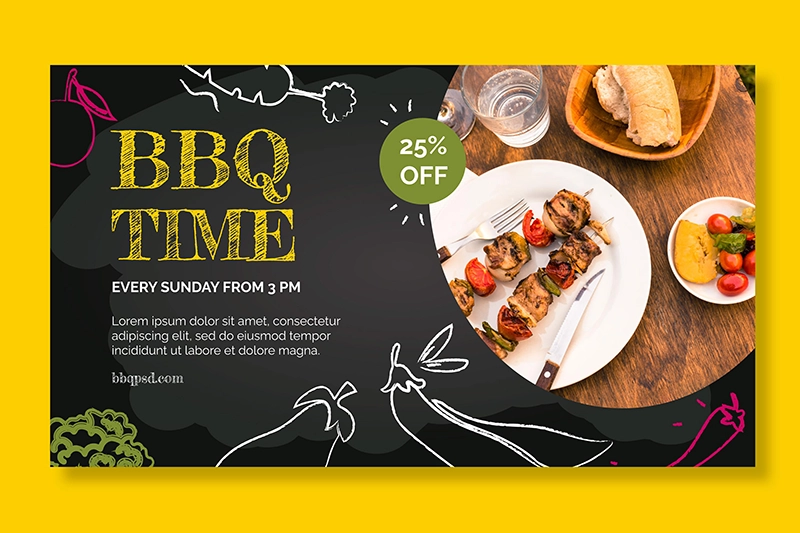
Summer Dining Promotions (5×7″)
Summer represents prime postcard season for Denver restaurants, particularly those with outdoor dining spaces.
Creative Example: Post Oak BBQ created standout 5×7″ postcards featuring scratch-off sauce samples—scented ink areas that gave recipients a literal taste of their signature flavors. These sensory-rich cards generated social media buzz beyond direct redemptions.
Timing Strategy: Mail summer dining promotions by June 1st to capture early summer planning. ZIP code 80202 (downtown) showed particularly strong response to outdoor dining promotions due to the concentration of office workers seeking lunch options.
Technical Consideration: Denver’s intense summer sun necessitates UV coating for postcards likely to be displayed on refrigerators or bulletin boards. Unprotected postcards can fade significantly within 2-3 weeks of exposure.
Winter Menu Mailers (8.5×11″)
The largest standard postcard format provides space for expanded winter menus that showcase comfort food offerings.
Format Advantage: Fold-out 8.5×11″ postcards allow restaurants to feature entire soup, stew, and chili menus during Denver’s coldest months. The expanded format accommodates food photography, descriptions, prices, and seasonal specials in a single mailer.
Success Story: A downtown soup and sandwich shop increased their January sales by 22% using 8.5×11″ fold-out menu postcards mailed to downtown office buildings. The larger format allowed workers to post the menu in break rooms, generating group orders throughout winter.
Production Tip: For winter campaigns, slightly heavier stock (18pt) performs better, as recipients tend to keep these reference menus longer than promotional cards.
Seasonal campaigns, such as holiday-themed postcards, can boost engagement. Check out holiday postcard ideas that delight customers and drive sales.
Effective Design Elements for Restaurant Postcards
Local Visual Elements That Connect
Incorporating recognizable Denver elements creates immediate connection with local diners:
Size-Specific Imagery Recommendations:
| Size | Recommended Denver Imagery | Why It Works |
|---|---|---|
| 4×6″ | Union Station food hall scenes | Compact, recognizable landmark |
| 5×7″ | Patio dining with skyline views | Perfect aspect ratio for scenery |
| 6×9″ | Plated dishes with mountain backdrops | Space for detailed food presentation |
| 8.5×11″ | Neighborhood maps with restaurant location | Room for wayfinding information |
Local Impact: Denver restaurants using location-specific imagery reported 31% higher retention rates compared to generic food images. The personal connection to recognizable settings creates stronger engagement with the promotional offer.
QR Codes That Drive Engagement
QR codes transform static postcards into interactive experiences:
Brewery Applications: Denver breweries use 5×7″ postcards with QR codes linking to limited-release beer alerts. This approach generated 42% subscription rates to text alert programs—significantly outperforming social media subscription requests.
Food Truck Integration: Mobile food businesses found particular success with QR codes linking to real-time location trackers. Small 4×4″ cards distributed at events led to 27% increase in follow-up visits when customers could easily locate the truck at future stops.
Implementation Tip: Position QR codes away from postcard edges, maintain minimum 1″ size for reliable scanning, and always include a brief text explanation of what the recipient will access by scanning.
Strategic Distribution for Maximum Results
ZIP Code Targeting by Restaurant Type
Not all Denver neighborhoods respond equally to restaurant promotions. Our data reveals distinct patterns:
Cuisine-Specific ZIP Code Performance:
| Cuisine | High-Response Denver ZIPs | Ideal Postcard Size |
|---|---|---|
| Sushi | 80206 (Cherry Creek), 80210 (DU) | 5×7″ |
| BBQ | 80216 (RiNo), 80219 (Southwest) | 6×9″ |
| Fine Dining | 80209 (Wash Park), 80220 (Park Hill) | 5.5×8.5″ |
| Breakfast | 80211 (Highland), 80212 (Berkeley) | 4×6″ |
Success Example: A Cherry Creek sushi restaurant targeted specific high-response ZIPs with their happy hour promotion, achieving 23% higher redemption rates compared to their previous city-wide mailing—while reducing their printing and postage costs by 60%.
Avoiding common distribution mistakes ensures your postcards reach the right audience effectively. Learn more about common postcard mistakes and how to avoid them.
Event Distribution Strategies
Strategic distribution at local events provides targeted exposure:
Sports Venues: Compact 4×4″ cards distributed at Broncos games generated strong response for quick-service restaurants offering postgame specials. The small format fits easily in pockets and withstands stadium conditions.
Festivals: Larger 5×7″ postcards performed exceptionally well when handed out at cultural events like the Cherry Blossom Festival. The additional space accommodated multiple menu items and mapped the restaurant’s proximity to the festival grounds.
Volume Strategy: For event distribution, quantity matters. Data shows 65% of postcards received at events are discarded within 24 hours. Combat this by distributing at least 2.5× your expected response volume.
Real Denver Success Stories
Snooze A.M. Eatery’s Pancake Promotion
Snooze A.M. Eatery implemented a 6×9″ pancake promotion postcard campaign targeting weekend brunch customers. Their approach:
- Targeted high-response breakfast ZIPs (80211, 80212, 80238)
- Featured professional photography of their signature pancake flights
- Included a “Skip the Wait” offer for early (8-9am) Saturday arrivals
- Distributed 7,500 postcards via direct mail and local coffee shop partnerships
Results showed a 47% increase in early Saturday traffic and 32% redemption rate—significantly outperforming their digital marketing efforts for the same promotion.
“We’ve tried every digital marketing platform available, but nothing beats our quarterly postcard campaigns for bringing in new customers. The physical card acts as a constant reminder on customers’ refrigerators, generating steady redemptions throughout the promotion period.” — Maria Rodriguez, Owner, El Taco Veloz
Key Takeaways
Restaurant postcard marketing delivers exceptional results for Denver restaurants when you:
- Match postcard size to your restaurant type and specific promotion
- Target high-response ZIP codes based on your cuisine category
- Use season-appropriate designs that align with Denver’s climate and activities
- Integrate physical postcards with digital follow-up through QR codes
- Maintain consistent mailing schedules to build recognition and response
The tangible nature of postcard marketing, combined with strategic size selection and targeted distribution, creates a powerful tool for driving both new and repeat business to Denver restaurants.
Frequently Asked Questions
What size postcard works best for restaurant promotions?
The 5×7″ size typically delivers the best results for restaurant postcards, with 23% higher redemption rates than standard 4×6″ cards. This size provides adequate space for food photography and offer details while maintaining reasonable production costs. For fine dining establishments, the 6×9″ size justifies its higher cost through better engagement.
How much does restaurant postcard marketing cost in Denver?
In Denver, restaurant postcard marketing typically costs $0.75-1.25 per piece for 5,000+ quantity, including design, printing, and mailing. Design services range from $150-350, printing costs $0.25-0.45 per card depending on size and finish, and postage averages $0.30-0.55 per piece for targeted local distribution.
What is a good redemption rate for restaurant postcards?
Denver restaurants average 8-12% redemption rates for well-designed postcard offers. Fast-casual concepts tend toward the higher end (10-15%), while fine dining establishments typically see 5-7% redemption. Neighborhood-focused campaigns targeting specific ZIP codes can achieve 15-20% redemption rates when paired with compelling offers.
How often should restaurants send promotional postcards?
Denver restaurants should send postcards quarterly at minimum, with monthly mailings showing the strongest results for quick-service restaurants. Data indicates consistent monthly mailings to the same addresses increases response rates by 8-12% per mailing cycle. Seasonal restaurants should mail 3-4 weeks before their peak season begins.
Do QR codes on restaurant postcards actually work?
Yes, QR codes on restaurant postcards generate 37% higher engagement than written URLs. Denver diners most frequently scan codes linking to online ordering (43% scan rate), special menus (38%), and reservation systems (32%). Position codes at 1″ minimum size on contrasting backgrounds with clear instructions on what the code provides.


